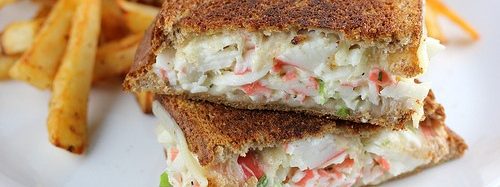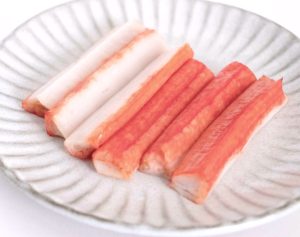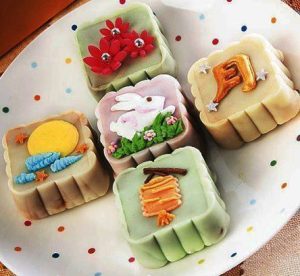

Toasted Krabi Salad Sandwich
Toasted Krabi Salad.
The many times that I have eaten a California roll from my favourite Japanese or Korean take out in the local mall has always been a good tasty lunch item with a stir-fry. I asked the cook why his California Rolls tasted so good and he explained he uses premium kamaboko. Ah! Meanwhile after a short search on the internet found that TNT sells the good surimi kamaboko. So I made a nice krabi salad adding some mayonnaise, old bay seasonings, lemon, lime, worcestershire and a shot of tabasco celery salt, pepper. Chopped some green onions and celery parsley. Let it rest for wee bit if you can. I cut a fresh spud and made some fries in a cast iron skillet.
Found some nice sprouted bread. Packed it grilled it and plated it! Yum!
Some Info about fake krab!
Imitation crab is made from surimi. The Hot Dog from the sea! Mostly Alaska pollock fish flesh that has been deboned, washed to remove fat and unwanted bits, then minced into a paste. This paste is blended with other ingredients before being pasteurized and pressed into shapes that mimic crab meat.
Hence the moniker Krabi Sea Dog!
While imitation crab is made from seafood, it generally contains no crab or other than premium stuff which uses a % of spider crab meat in the mix and a tiny amount of crab extract that is added for flavoring.
Pollock, which has a mild color and odor, is commonly used to make surimi. This fish is also used to make fish sticks and other breaded fish products. In Japan, surimi-based seafood is often called kamaboko.
I opt for the premium imitation crab may be spelled “krab” to indicate that it’s fake Kamaboko is made by forming various pureed deboned white fish with either natural or man-made additives and flavorings into distinctive loaves, which are then steamed until fully cooked and firm. These are sliced and either served unheated (or chilled) with various dipping sauces, or added to various hot soups, rice, or noodle dishes. Kamaboko is often sold in semicylindrical loaves, some featuring artistic patterns, such as the pink spiral on each slice of narutomaki, named after the well-known tidal whirlpool near the Japanese city of Naruto. The simulated crab meat product kani-kamaboko) is the best-known form of surimi in the West. Red-skinned and white kamaboko are typically served at celebratory and holiday meals, as red and white are considered to bring good luck shape of bamboo leaves and often lightly grilled immediately prior to serving.









